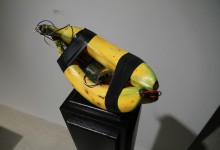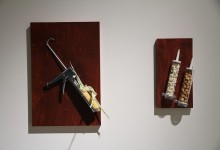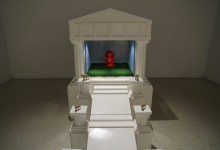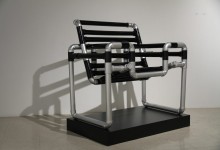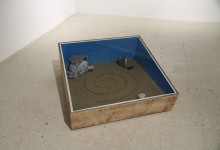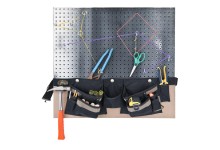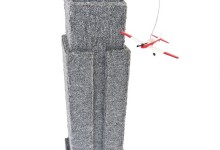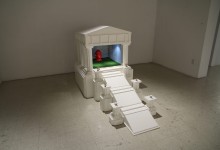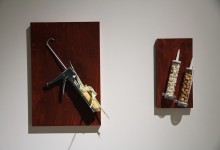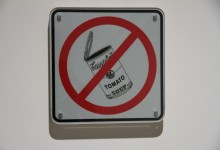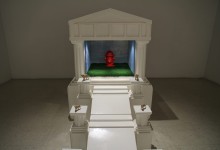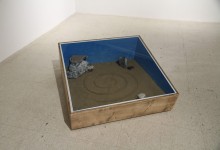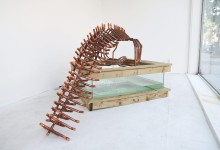September 3 – October 22, 2011
‘Far From Matter of Fact’: The Subversive Assemblages of François Raymond.
Text by James Campbell
François Raymond’s three-dimensional compositions, built from found and made objects, brilliantly mirror the world we live in. At the same time, they explode our unthought assumptions concerning that world. Raymond explores the assemblage as critique, at once perceptual, societal and phenomenological. If, in literature, assemblage is a text that is “built primarily and explicitly from existing texts in order to solve a writing or communication problem in a new context” then Raymond is doing something similar in the world of objects and the juxtaposition between those objects. Inside the juxtapositions, there is no comforting certainty, but the spectre of disjuncture.
Raymond is no ordinary bricoleur. His bricolage is far from being matter-of-fact. His sensibility is unique. Whereas most assemblage artists wish to unify objects for aesthetic ends, he wants to disrupt the notion of unity in favour of critique and laying bare the mechanics of sociomaterial interaction and the object dreams of the observer. In exploring the premise and underpinnings of object assemblage, Raymond points to the elision between those objects and our own object world reality, and his assemblages are thus experienced as peculiarly loaded and disruptive, however banal and familiar their component pieces may at first seem.
Something jars us as it stakes its claim upon us. Familiarity breeds indeterminacy. Our recognition of these objects as both iconic and ironic lends them an auratic life that extends beyond those objects themselves. The collation of objects and their juxtapositions generate a mirroring of our own world that is far from whimsical. It is a potent critique founded on a sort of assemblage thinking that precedes the fabrication of the works themselves.
His works possess a sort of grandeur in their very exactingness. They have a magical self-presence and, not least, they possess a subtle satirical bent. It is as though Raymond is commenting on how we live now through a decidedly Deleuzian lens: his objects effortlessly network with the vast assemblages of our own unconscious.
This work also evokes a new Neo-Dada art beyond the dreams of Edward and Nancy Reddin Kienholz. Walter Hopps, in his catalogue essay for a Kienholz retrospective, said: “No one ever forgets the first time they see a Kienholz.” I suspect it will not be long before viewers aver that “No one ever forgets the first time they see a Raymond”.







